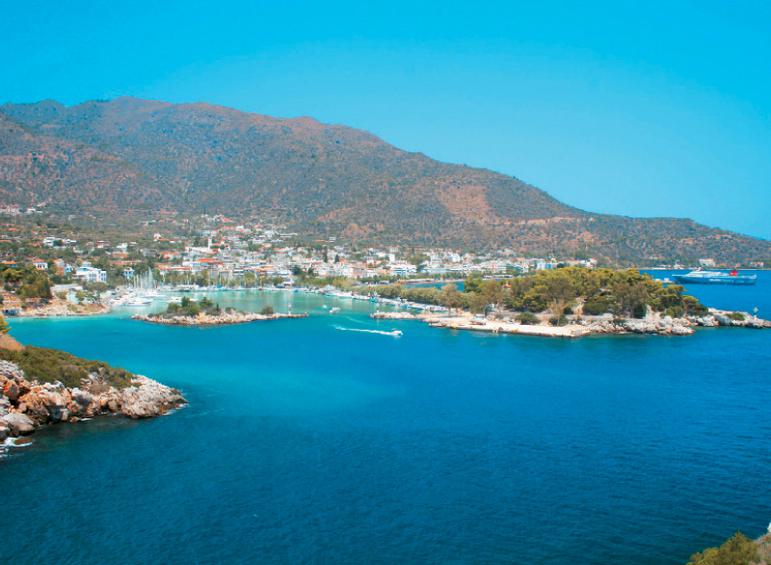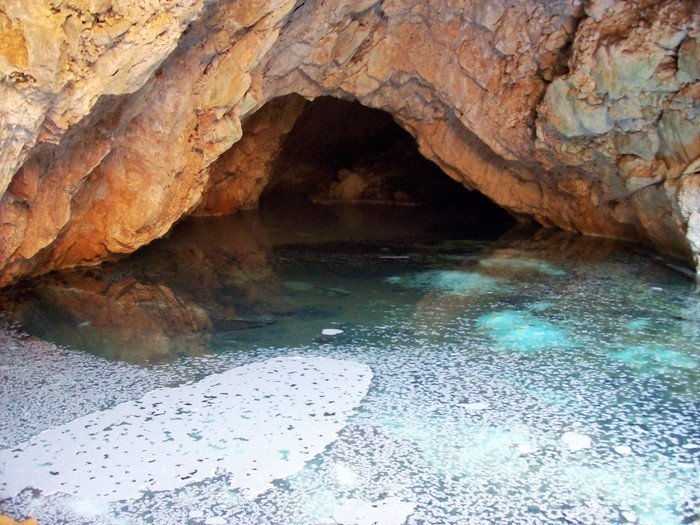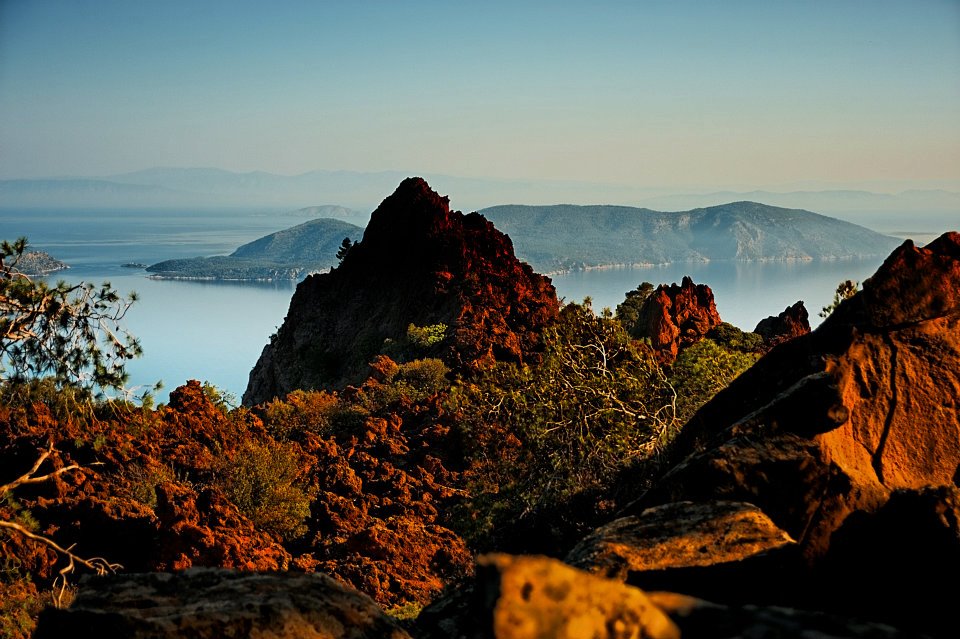Cave of the Pigeons
This is one of the most remarkable natural attractions of the region. The cave of Methana (also known as "Cave of the Pigeons"), was discovered by four locals in 1973 and it is 2.5 million years old. The length of the cave is 250 m. and it consists of three chambers: in the first one there is a small lake, the second one is full of rocks that have fallen from the ceiling while the third one is again full of water. Basically, the cave is an underground aquifer. The second and third chambers have impressive stalagmites in their interior but there are no available photos at the moment. Locals have said that the cave extends till Throni plateau.
Volcano
Climbing on the inactive volcano of Methana is a unique experience. The most important of the thirty craters has been found near the village of "Kameni Chora". Hiking to the crater, through a pine forest, takes less than an hour and offers spectacular views of the Saronic Gulf.
St. Anargyroi Islet
This little island with crystal clear waters and pine trees. It is connected to Methana with a narrow strip of land. The beach is organized and it is ideal for swimming, fishing and water sports.
Acropolis of Ancient Methana
The ruins of the Acropolis of Ancient Methana are located on the hill of Palaiokastro, near Vathi. Based on archaeological findings the area was inhabited continuously from the Neolithic period (5000 BC). Remains of ancient buildings from the sunken city of Methana can still be seen in the sea.
Faviero’s Castle
At Methana you can see the imposing medieval Castle of Faviero, with its four small towers. At a short distance north of the fort, you can see a big part of the fortification wall which, based on Thucydides, was constructed by the Athenians during the Peloponnesian War (425 BC).
Hill of St. Constantine and Helen
This is an important archaeological site, where the remains of a Mycenaean settlement (dating back to the 14th and 13th century BC) were discovered. The tributes found in the building prove that it was a place of worship, probably of Poseidon.
Throni
A tower dating back to the 4th century BC is preserved in Throni. Here you will also see the ruins of a mill from the 3rd century BC.





